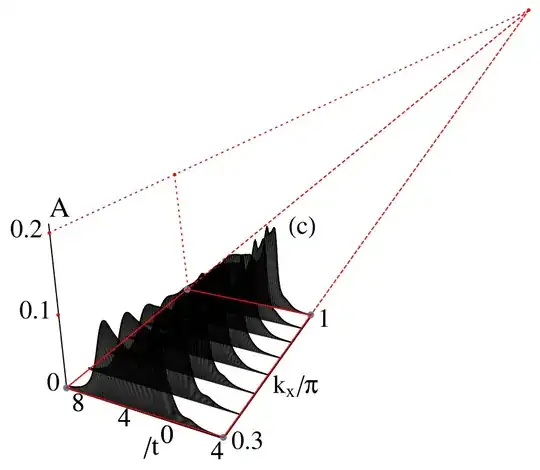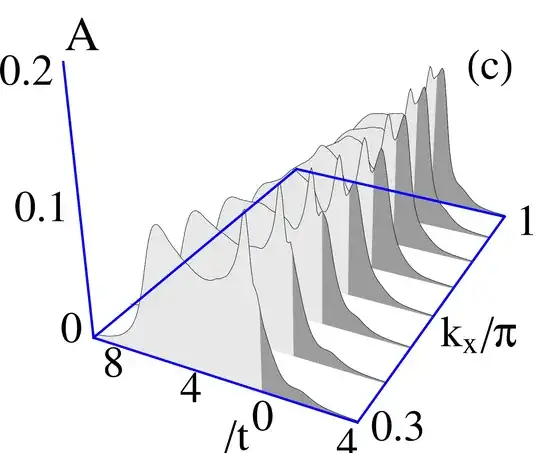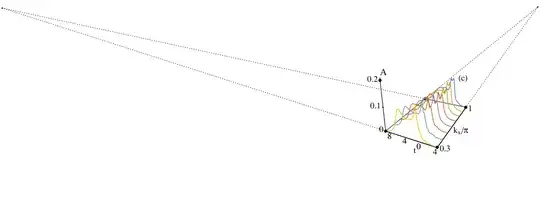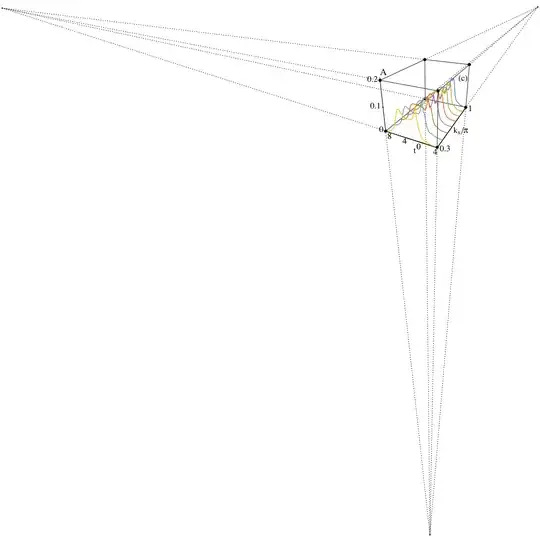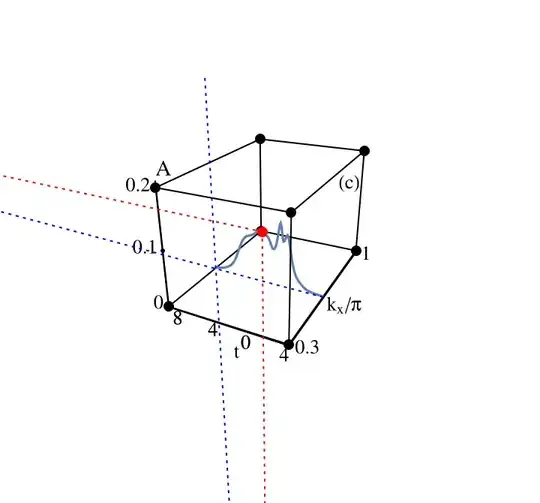[Too long for a comment, so adding this as an answer to supplement yours.]
Once you’ve gotten the bounding “cube” for a graph set, I think you can save yourself quite a bit of work by computing a rectifying homography for each slice instead of painstakingly working out intersections and cross-ratios. For each slice, find the corners—the points at which the plane of the slice intersects the bounding cube—and then compute the mapping from this quadrilateral to an appropriately-sized rectangle using the method in this answer. For each graph, the $B$ matrix for this construction is constant. E.g., for the bottom left graph, the destination rectangle is $[-8,4]\times[0,0.2]$, which yields $$B = \begin{bmatrix}8&-8&4\\0&0.2&0\\-1&1&1\end{bmatrix}.$$ For the front slice of this graph (making my own guess at where the 0.1 point on the A axis lies), the homography matrix works out to be $$\left[
\begin{array}{ccc}
0.0119905 & 0.000455823 & -10.0139 \\
0.0000677027 & 0.000210969 & -0.0960643 \\
0.000150268 & 0.000123509 & 0.70175 \\
\end{array}
\right].$$ Applying this matrix to points on the image of the front graph slice and dehomogenizing will recover their original coordinates. To illustrate, applying this transformation, combined with some scaling to make the destination rectangle a square, to the image of the graph produces the following rectified image:

For the other slices, you would need to compute the corresponding quadrilateral corners and homography.
To take a somewhat different approach, each graph contains enough known/measurable point pairs for you to recover the camera matrix $P$. (Indeed, it appears that they all basically use the same projection, so you could combine data from all of the graphs to sharpen up the estimate.) You can find methods for doing this in any standard reference on computer vision such as Hartley and Zisserman’s Multiple View Geometry In Computer Vision. Since you’ve computed/estimated the world axis vanishing points, you can use them as additional constraints on $P$: its first three columns are these image points. The last column of $P$ is the image of the world origin, which unfortunately can’t be measured directly in these graphs. So, $P$ will be of the form $$\begin{bmatrix}\lambda \mathbf v_X & \mu \mathbf v_Y & \tau \mathbf v_Z & \mathbf o\end{bmatrix}.$$ The last coordinate of $\mathbf o$ can be fixed at $1$, so there are 5 unknowns to be determined from known world-image point pairs.
Decomposing $P$ as $[M\mid\mathbf p_4]$, a point $\mathbf x$ in the image back-projects to the ray (in inhomogeneous Cartesian coordinates) $\tilde{\mathbf X}(\mu) = M^{-1}(\mu\mathbf x-\mathbf p_4)$. Rectifying each graph slice is then just a matter of intersecting this ray with the plane that represents the slice. These planes are all parallel to a coordinate plane, so the required computation is particularly simple.
